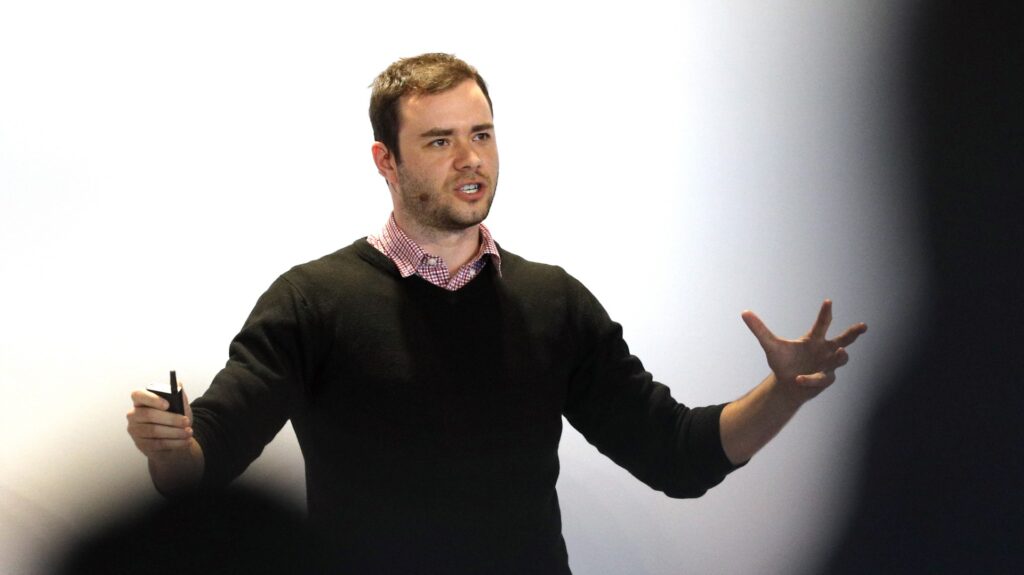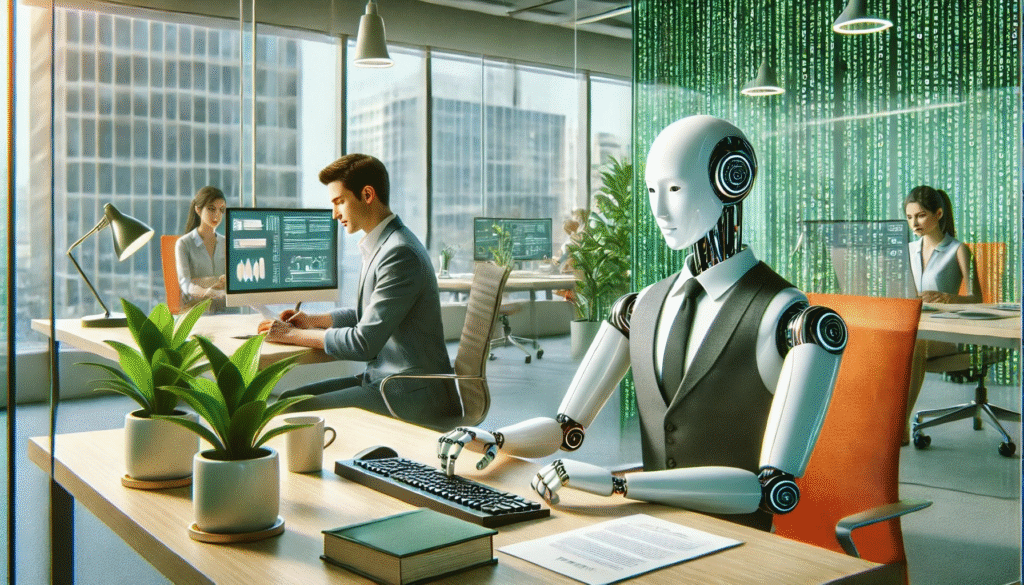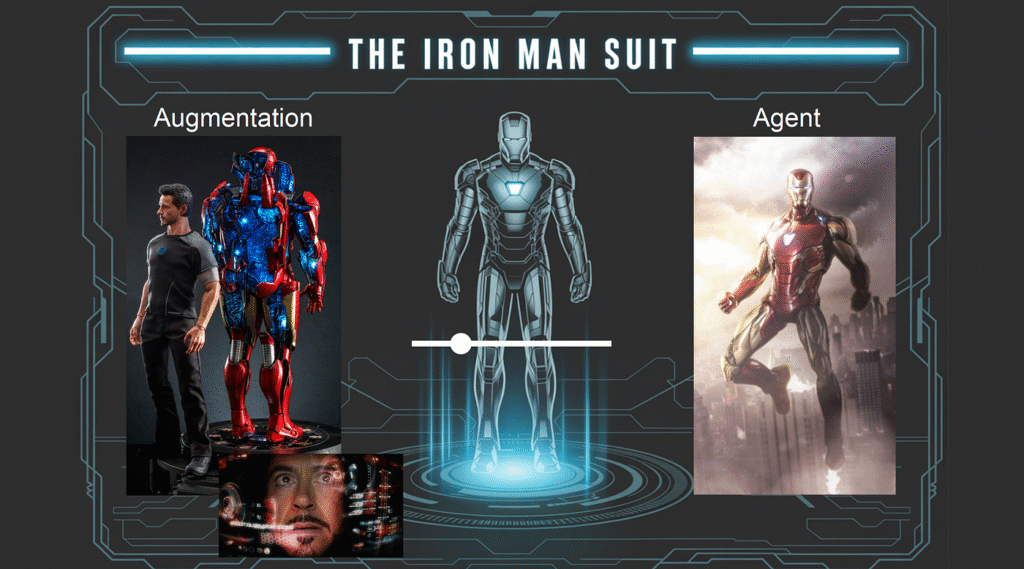Imagine you could talk to your computer like a friend. Not just to ask for the weather, but to ask it to build things for you. “Hey computer, can you make me a website for my photgraphy business?” What if anyone could create an app just by describing it?

This isn’t a scene from a sci-fi movie. According to Andrej Karpathy, one of the most important minds in artificial intelligence, this future is already here. Karpathy, who has led AI teams at both Tesla and OpenAI, is like a guide from the future. He’s here to tell us that the way we build software is changing in a huge way.
For nearly 70 years, writing software has been a specialized, difficult skill. But now, we are entering a new era he calls “Software 3.0.” It’s powered by a new kind of magic: our own language.
This article will break down exactly what Software 3.0 is. We will look at how it works and what it means for everyone—students just starting, professionals in their careers, and entire companies.
The Three Ages of Software: A Quick History Lesson
To understand where we’re going, we first need to know where we’ve been. Think of software in three simple stages.
Software 1.0: The Precise Recipe Book
This is the code we’ve used for decades. Languages like Python, Java, or C++. Think of it like a very, very detailed recipe book. To get a computer to do something, you have to write down every single step. Add two cups of flour. Stir for exactly 30 seconds. Bake at 350 degrees. If you miss a single step or write it in the wrong order, the whole thing fails. It’s powerful but very rigid. This is how most of the digital world around you was built.
Software 2.0: The Student Chef
Then came a new idea: neural networks. This is what people often mean when they say “AI.” Instead of writing the recipe yourself, you become a teacher. You show a student chef (the neural network) 10,000 pictures of perfect cakes. You don’t tell it how to bake. The student just studies all the examples and figures out its own recipe. This is incredibly good for specific tasks. It’s how your phone knows how to recognize your face or how a translation app works. It learns from data.
Software 3.0: The Magical Genie
Now, something new is happening. This is the world of Large Language Models (LLMs) like ChatGPT. This is like having a magical genie. You don’t need a detailed recipe or thousands of pictures. You just make a wish.
You say, “Genie, I want a three-layer chocolate cake with blue frosting and my name on it.” The genie understands English. It knows what a cake is, what layers are, and what frosting is. It just makes it for you. Your wish—your sentence in plain English—is the new program. This changes everything.
A New Kind of Computer
Karpathy says we need to think about LLMs in a new way. They aren’t just clever chatbots. They are a completely new type of computer.

The Mainframe in the Cloud
He compares them to the giant, room-sized computers from the 1960s. These early computers, called mainframes, were incredibly powerful but also insanely expensive. No single person could own one. So, companies and universities would buy one, and people would “time-share” it. They would book a slot to run their program on the big machine.
LLMs are the same today. It costs hundreds of millions of dollars to train a top-tier LLM. So labs like OpenAI or Google build them, and we access them over the internet. When you type into ChatGPT, you are time-sharing a massive computer in the cloud. We are all clients connecting to a centralized brain. The personal computer revolution for AI hasn’t happened yet.
The LLM as a New Operating System
Think of this new computer’s brain as a new kind of operating system (OS), like Windows or macOS. The LLM is the OS. It manages memory, which is its “context window” (how much it can remember in a single conversation). It uses tools to solve problems. And how do we talk to it?

When you type a prompt, Karpathy says it’s like using the “terminal” or command line from the old days. It’s a direct, text-based way to talk to the computer’s core. We’re still in the early, clunky phase. The beautiful, user-friendly graphical interfaces (GUIs) for this new OS haven’t been fully invented yet.
Meet Your New AI Coworker
To work with this new computer, you have to understand its personality. Karpathy suggests thinking of an LLM as a new coworker. A very strange one.

The Good: A Superhuman Brain
This coworker is a genius. They have read the entire internet. They can remember obscure facts, write beautiful poetry, and code in every programming language. Their knowledge is encyclopedic. They are like the character in the movie Rain Man, who could memorize a whole phone book instantly.
The Bad: The Quirky Colleague
But this coworker also has some serious flaws.
- They Hallucinate: Sometimes, they just make things up. And they do it with incredible confidence. They might insist that a strawberry has two “r”s or invent a historical event that never happened.
- They Have Amnesia: This is a big one. As soon as your conversation is over, they forget everything. Their memory gets wiped clean. It’s like the movie 50 First Dates and Ghajini. You have to re-explain the context of your project every single time you talk to them. They don’t learn from experience like a human does.
- They Are Gullible: They are very trusting. They can be easily tricked by bad instructions. This is a security risk called “prompt injection.”
So, what does this mean? It means you can’t just blindly trust your new AI coworker. You have to work with them. You have to supervise them, check their work, and guide them.
The Biggest Opportunity: Building the “Iron Man Suit”
So, what should we be building with this new technology? Karpathy has a brilliant analogy.
He says many people are getting too excited about building fully autonomous agents—robots that can do everything on their own. He thinks that’s a mistake for now. The AI just isn’t reliable enough.
Instead, he says we should focus on building the “Iron Man suit.”
Think about it. Tony Stark is always in control. The suit doesn’t fly off on its own. But when he wears it, he becomes superhuman. The suit augments him. This is the goal for AI right now: build tools that make humans better, faster, and smarter.
What does a good “Iron Man suit” app look like?

- A Visual Dashboard (GUI): A human needs to see what the AI is doing. A picture is worth a thousand words. When a coding assistant suggests a change, it shows the old code in red and the new code in green. This makes it incredibly fast for a human to see the change and say “yes” or “no.” We need more of this for all kinds of tasks.
- An “Autonomy Slider”: The user must be in charge. They should have a slider to control how much the AI does. On one end, the AI gives you small suggestions, like finishing your sentence. On the other end, it can draft a whole report for you. The human decides how much autonomy to give the AI for each task.
- Keeping the AI on a Leash: The best way to work with a fallible AI is in a fast loop. The AI suggests a small, manageable change. The human quickly checks it. This loop repeats. This prevents the AI from going off and making a massive 10,000-line change that is impossible to verify and probably full of bugs.
Everyone’s a Programmer Now
One of the most exciting parts of Software 3.0 is who gets to participate. Because the programming language is English, everyone can be a programmer.
Karpathy talks about a fun idea he named: “vibe coding.” This is when you build something not with strict code, but with a “vibe”—a feeling or a description. He told his AI that he wanted to build a simple iPhone app. He doesn’t even know the programming language for iPhones. But by just describing what he wanted, the LLM wrote the code for him, and he had a working app in a day.
This is a revolution. For decades, you needed years of study to create software. Now, you just need an idea and the ability to describe it. Karpathy calls it a “gateway drug” to software development. It will get millions of new people, especially kids, excited about creating things with technology.
Conclusion: The Decade of the Agent is Here
So where does this leave us? We are at the very beginning of a new chapter in technology. We’ve journeyed from rigid recipes (Software 1.0), to student chefs (2.0), and now to magical genies (3.0). We have a new kind of computer that works like an OS from the past, and our job is to build “Iron Man suits” that make us better.
Karpathy’s message is a call to action for everyone.
- For Students: Your creativity is now your greatest technical skill. Learn to be fluent in all three software paradigms. Learn to code, learn how data models work, and become an expert at describing what you want. The world is your oyster.
- For Professionals: Look at your product or service. How can you add an “autonomy slider”? How can you build an Iron Man suit for your customers to make their lives easier?
- For Organizations: It’s time to make your digital infrastructure friendly for AIs. Turn your documentation into something an AI can read. Pave the digital roads for the agents that are coming.
This is one of the most exciting times to be alive and working in tech. The tools are more accessible than ever before. The field is wide open for new ideas. The decade of human-AI collaboration has begun.
The only question left is: what will you build?